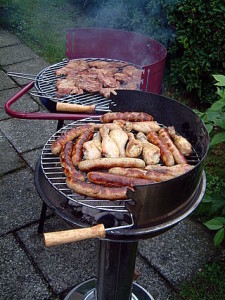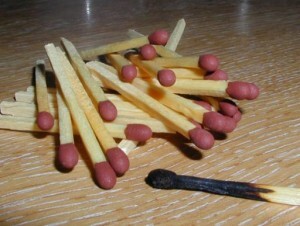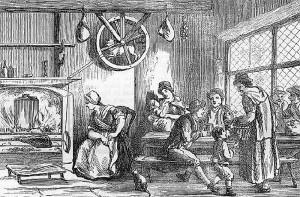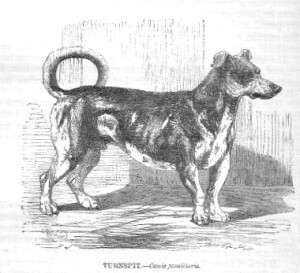A Jane Austen Barbeque
Vegans, Vegetarians, and PETA look away from this post.

As we get ready to celebrate the 4th of July, our nation’s Independence Day, we should take the time to thank a service man or veteran for their duty, for choosing to protect America so we might enjoy freedom and wonderfully barbequed hamburgers and hot dogs.
 Source: Wiki Commons
Source: Wiki CommonsThe English during our period of the Regency were not particularly joyous of America’s Independence. They still brooded over their loss in our Revolutionary War and impressed our men into service to fight their other wars, but I digress.
Yet, we can still trace our love of fire roasted meats to them.
Fire roasting was (and is) common around the world and a forerunner to our barbecue cooking method. From cooking meat in a hot pit in the ground to using wooden frames to hold the meat, people of all cultures and all nations figured out fire-cooked meat was yummy. The English were quite serious and well regarded for their meat cooking.
Pehr Kalm, a traveler to England on his way to America (1748) noted:
“Roast meat, Stek, is the Englishman’s delice and principal dish. It is not however always roasted, Stekt, to the same hardness as with us in Sweden. The English roasts, stekarne, are particularly remarkable for two things.
We can thank John Walker, an English chemist who in 1826 invented the friction match. He took a stick of wood and dipped it in a paste formed from potassium chlorate and sulfur to make a match that lit when struck on an abrasive surface. As you light up the coals tomorrow, think John Walker, unless you own one of those fancy auto-lighting-gas grills or a lighter.
 Source: Wiki Commons
Source: Wiki CommonsOne thing I am glad did not become the norm is the Turnspit Dog. Look at the picture below and see the dog on the circular track pinned to the wall. No, your eyes are working properly. The doggie is hung up like kitchen pots or a ladle, just another kitchen utensil aiding the cooking of foods in an English kitchen.
 Source: Wiki Commons
Source: Wiki Commons
Can you imagine? “Cook, is the meat done?”
“No milord, Lassie has another mile to go.”
Turnspit dogs were short animals trained to run on a treadmill like cage so that spit meat cooked evenly. These kitchen helpers were small, low-bodied creatures with short front legs. They often had grey and white fur or reddish brown.
 Source: Wiki Commons
Source: Wiki CommonsThe dogs, commonly called Kitchen dogs, Turnspit dogs or Vernepator Cur were very sturdy and capable of turning the spit wheel for hours. Now that is some serious cooking if you have to train pets to help. Lucky for us and the greater good, this practice died off by the late 1850’s.
So light up those grills tomorrow, be thankful of our independence, and give a special patty to your pet pouch. Happy Fourth of July.
Source: Kalm’s Account of His Visit to England, 1758 http://www.archive.org/stream/cu31924...
Originally posted 2014-07-03 10:00:00.




